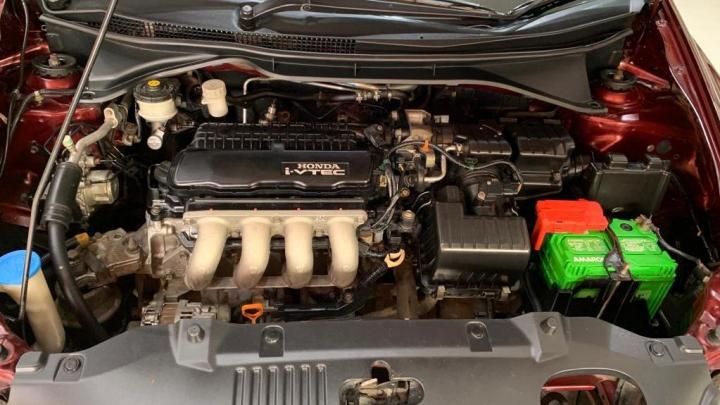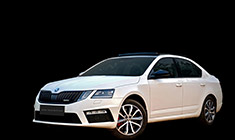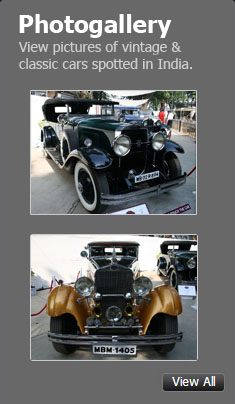News
Here's why your Honda City might be overheating: Diagnosis & solution
The high-temperature warning light would turn on at times when the car was in tight traffic/long traffic signals & would turn off when the car was in motion.
BHPian vigsom recently shared this with other enthusiasts.
Background
This is a brief report of the issue, diagnosis and solution to the overheat lamp turning on once in a while in a 2013 Honda City, done about 1,43,000km. This is a "Cool Bengaluru" car that belongs to a relative.
Initial Report
The driver of the car reported that:
- The high-temperature warning light would turn on at times when the car was in tight traffic/ long traffic signals, and would turn off when the car was in motion.
- The coolant tank level was at full most of the time, with the top external side always wet.
Diagnosis
I was attending a wedding in Bengaluru and was dressed suitably for the occasion. When the driver reported this issue, I was contemplating helping out after the function, but something told me to go for it right then; rolled up my sleeves and asked him to open the hood. I initially suspected a malfunctioning radiator fan motor, asked him to start the engine and the AC, and found the radiator fan speed to be fine.
Observations
- Radiator cap - found in good condition
- Radiator level - Radiator top channels were visible and super clean; inference - radiator wasn't fouled, but the coolant level in the radiator was lower than normal
- Coolant Tank - filled to the brim, and color seemed to indicate it was the blue Honda Coolant
I was keen to pull back some of the excess coolant from the tank into a bottle to bring the coolant tank level to its Max mark. When I wanted to do that, discovered that the coolant tank top cap was there, but the coolant tank dip hose was absent; looked into the tank but couldn't find any hose inside.
The radiator inlet cap
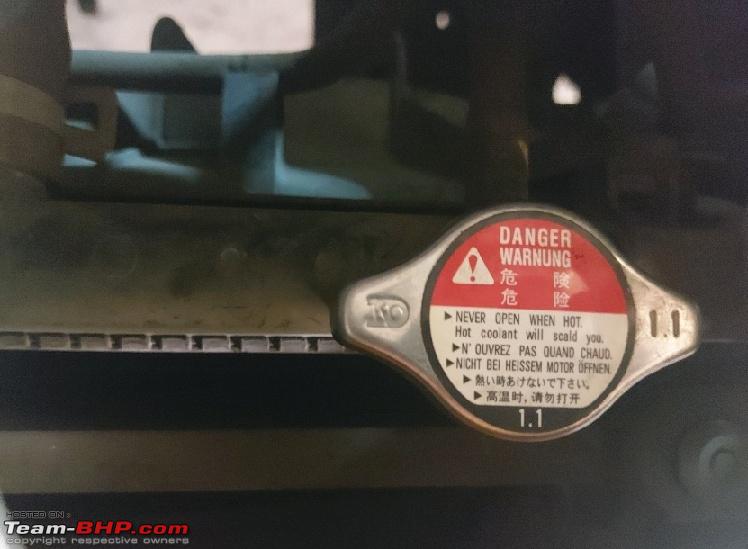
Coolant Tank - note the coolant overflow stains
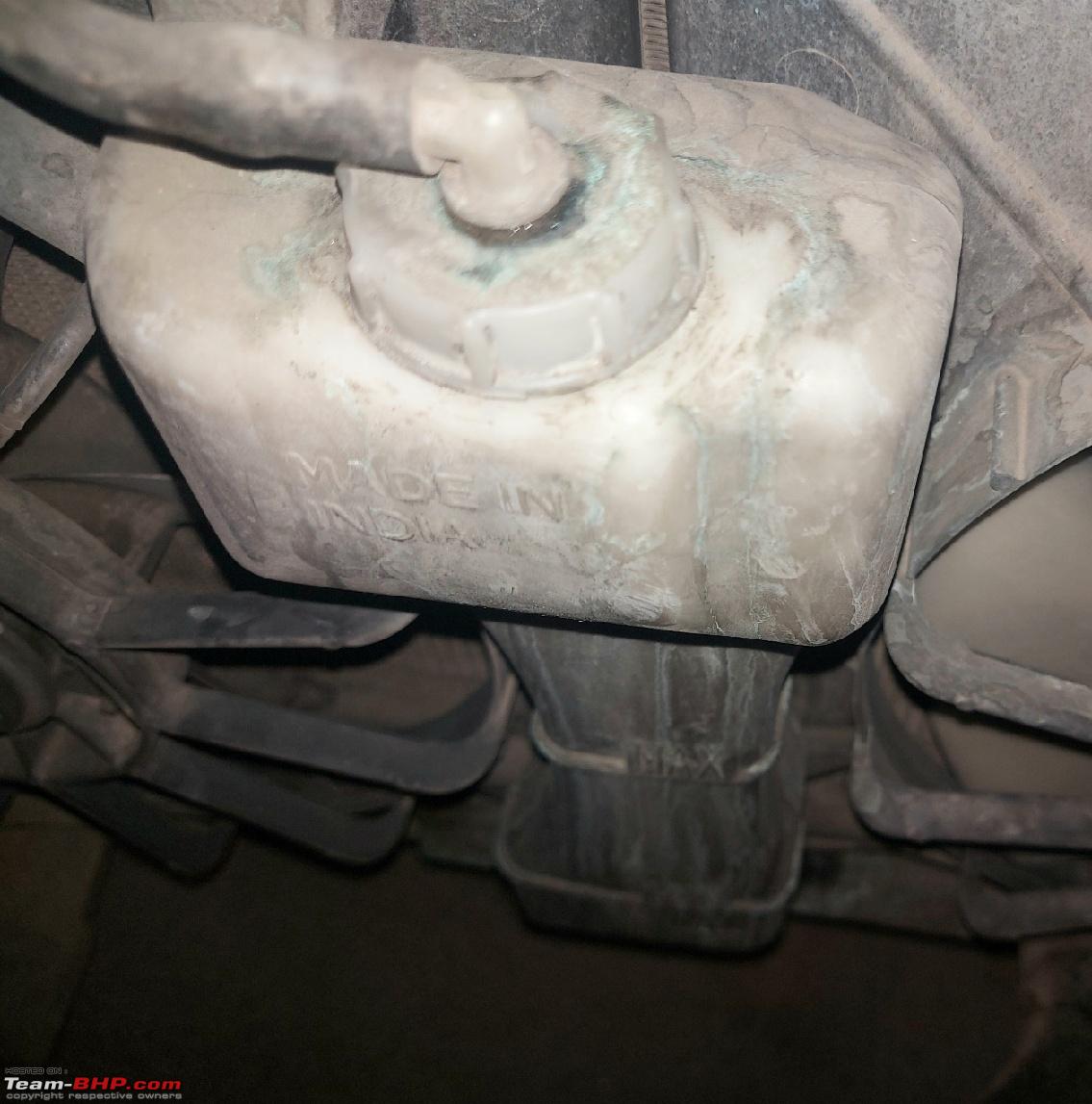
Coolant Tank hose missing
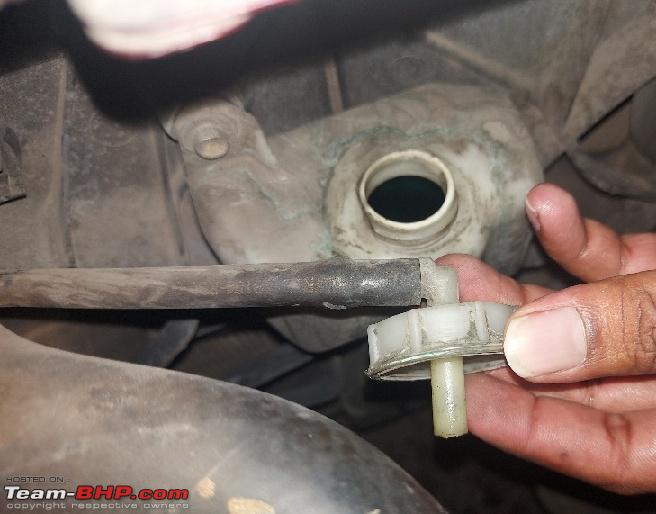
How the cooling system works
If the dip hose isn't present, the radiator vacuum relief system will not work. Why? Read on.
At the cost of sounding repetitive, let me give a brief on how the engine cooling system works. This is without the AC on.
- When the engine is started up in cold conditions, the circulation is just around the block and cylinder head. As the temperature reaches the set point of the thermostat valve (say, 82 degrees C), the thermostat opens and coolant circulates through the radiator. The thermostat by now is fully open.
- Once the engine coolant picks up more heat, the engine coolant temperature (ECT) sensor gives a command to the ECU to start the Radiator fan. The radiator fan runs for just the time required to bring the engine coolant temperature down to the normal ECT value.
- The radiator has a pressure cap (older cars' caps were set at 0.9 bar, then 1.1 bar, and most recent coolant reservoirs are at 1.4 bar). This cap releases a bit of coolant to the coolant tank to keep the system pressure within the set value.
- Once the engine is shut off, the coolant system temperature drops, and this is accompanied by a gradual reduction in system pressure. As the system goes cold, the vacuum relief valve (seen at the bottom of the radiator cap inside) pulls the relieved excess coolant from the coolant tank back into the radiator. The radiator thus remains full at all times. Whatever loss in the coolant is typically seen by a minor drop in level in the coolant tank, which needs to be topped up every now and then.
What happens if the dip hose is absent
Without the coolant tank dip hose, coolant cannot be pulled back into the radiator through the vacuum relief valve. The level in the radiator would deplete when hot and released into the coolant tank, but won't get pulled back when the system gets cold. Thus, the coolant tank level would gradually rise, and then overflow would start.
Lesser coolant in the radiator would mean higher temperatures in extreme traffic, thus resulting in the high-temperature warning light coming on. When the vehicle is in motion, heat exchange between air and coolant is better and the temperature light goes off. Heat exchangers are typically overdesigned. In a cool city like Bengaluru, the light would likely go off quicker.
What was done to solve the issue
- Excess coolant in the coolant tank (approx 600ml) was siphoned out and then transferred back to the radiator. The coolant tank level was thus brought to approx. the MAX mark. Some dilute coolant top-up was done in the radiator (approx 300ml or so).
- New dip hose fixed in the coolant tank.
- System run for a day in stop-n-go traffic and the coolant tank level was observed steady plus the hi-temperature light didn't come on.
What more needs to be done
- The front bottom left end of the radiator inlet side was observed to have some muddy deposit on it, rendering those fins getting blocked. Although the area is less than 10% of the total surface area, I've requested the driver to have this and the front side of the AC condenser mild - pressure washed.
- Replacement of the coolant with Honda Genuine Coolant at the next service (not sure if it was replaced at around the 1,00,000km mark).
What could have gone wrong
The coolant tank hose might have gotten dislodged and fallen off when the coolant tank cap was opened; oversight by the technician to not fix it back.
Coolant system image with the missing hose indicated (image courtesy boodmo.com)
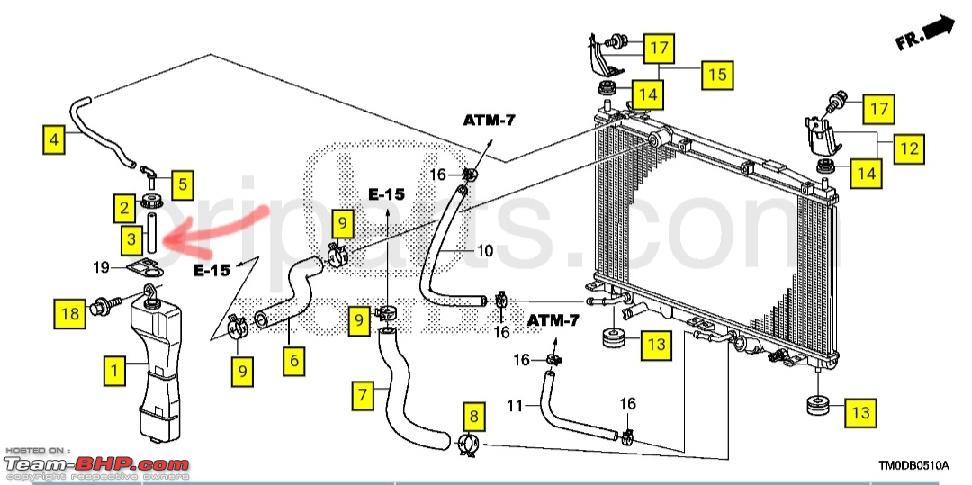

Check out BHPian comments for more insights and information.
- Tags:
- Indian
- Member Content
- Honda City
- Honda



